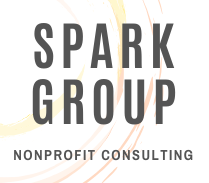4 Easy Tips for Summer Evaluation
The summer months are here, and for many organizations, this is a natural transition period into a new cycle of summer programming.
If this is the case for your organization, this transition period can be a great opportunity to check in and check up on your organization’s evaluation practices and processes.
Don’t have evaluation practices and processes established at your organization? Not to worry! Summer can be a great opportunity to begin to establish some simple evaluation practices alongside your summer programming. (Of course, you can always contact Spark Group for more help or tailored guidance for your specific program evaluation needs.)
Here are 4 easy tips to follow, to set yourself on the right track.
Think S.W.O.T.
In a previous blog post, we discussed the importance of program evaluation, and shared how to identify the Strengths, Weaknesses, Opportunities, and Threats (SWOT) facing your program/organization. Make a simple chart with four quadrants – one for each of these categories. Then gather your team to brainstorm and discuss what you already do well (strengths), where you can use some improvements (challenges), where are the areas where there is the most potential for growth (opportunities), and what are some of the obstacles that could prevent that growth (threats). A couple variations on this method include the very similar S.W.O.C. analysis (Strengths, Weaknesses, Opportunities, Challenges), or the slightly different S.O.A.R. analysis – which uses a more asset-based lens to brainstorm and categorize Strengths, Opportunities, Aspirations, and Results.
Apply S.M.A.R.T. Goals
It’s always a good idea to consider the evaluation process at the start of a program cycle, rather than only at the program’s end. One way to do this is to think of the goals you are working towards with this project or program. As you come up with these goals – make sure they are SMART.
S.M.A.R.T. stands for Specific, Measurable, Achievable, Relevant, and Time-bound.
You can read more about SMART goals – and see some examples – in a previous blog post, here.
Create a Logic Model
Another great way to start a project with evaluation in mind is to create a Logic Model that helps visualize the relationship between what you put into the program in the beginning, and what you hope to get out of it by the end. (In other words, the inputs and outputs.)
Logic models can most easily be created by drawing up a chart with the following columns across the top:
Inputs → Activities → Outputs → [Short Term/ Intermediate] Outcomes → Impacts:
As the arrows between these columns suggest, the logic model illustrates how the different stages grow and build upon each other to eventually have long-term impact on a targeted community or population.
Sometimes there can be a bit of confusion around the difference between these different categories.
Inputs The resources needed to implement the activities. Inputs can include tangible resources (supplies, equipment, etc), financial resources (costs), and human resources (staff, volunteers, time spent, etc).
Activities: What is done with those resources
Outputs: Tangible products, capacities, or deliverables that result from the activities
Outcomes:
Short term outcomes are changes in LEARNING: awareness, knowledge, attitudes, opinions, motivations
Intermediate outcomes are changes in ATION: behavior, practice, policies
Impacts are changes in CONDITIONS: social, environmental, civic, economic.
Evaluate with Equity
When you’re conducting evaluation, is equity top of mind? It should be! An important – an simple – step in conducting equitable evaluation is to make sure your clients are involved in the evaluation process. Do the questions your asking in order to evaluate your programs or services make sense in the context of your clients/stakeholders? Ask them! Better yet, include clients/stakeholders in the evaluation process from the beginning. Ensure there are clients/stakeholders present at the table as the questions or evaluation criteria is developed, or as you conduct your SWOT or SOAR analysis.
Spark Group can help you set up evaluation practices. Contact us to learn more.
⭐ Join my weekly newsletter where I share tons of exclusive tips, tools, grant opportunities, and resources to my subscribers. Subscribe on the Spark Group home page.




